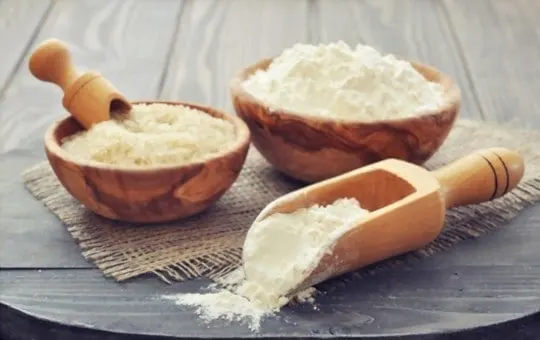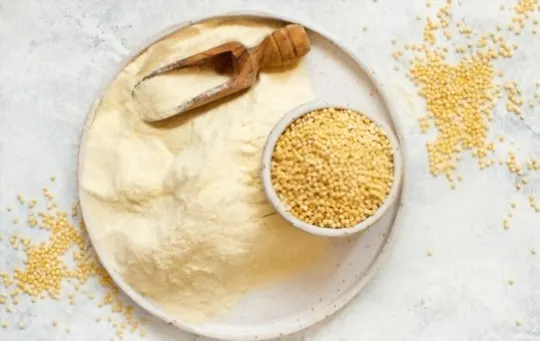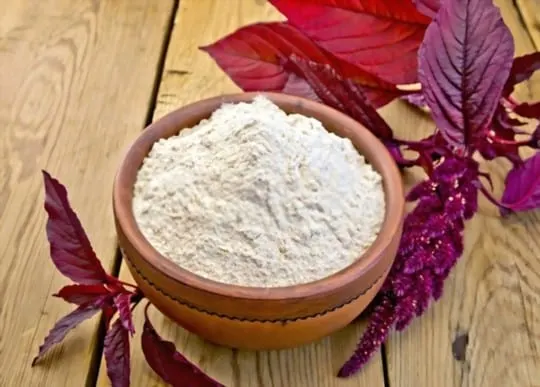Baking’s our jam, especially when experimenting with recipes. Finding the right substitute for soybean flour can be tricky, right? You’re in luck.
We’ve been down this road and came back with treasures. Not every flour offers the same magic — some add moisture, others flexibility, and a few bring a nutty flavor.
Our quest wasn’t just about swapping; it was about elevating those baked goods. The great news? We nailed it. Five fantastic substitutes are waiting for you just a scroll away.
And trust us, they’re game-changers. Each brings its own flair to the table, ensuring your baked creations never miss a beat. Ready to amp up your baking game? Let’s get this show on the road.
The 5 Best Substitutes for Soybean Flour
If you’re looking for a soy-free flour alternative, you have several options.
Below are five of the best substitutes for soybean flour.
1 – Chickpea Flour

Chickpea flour, also known as garbanzo flour or besan, is a type of flour made from ground chickpeas.
It has a nutty, earthy flavor and a slightly gritty texture.
Chickpea flour can be used in both sweet and savory dishes, and it is a good alternative to wheat flour for those with gluten sensitivities.
Chickpea flour can also be used to replace soybean flour in recipes.
When substituting chickpea flour for soybean flour, use a 1:1 ratio.
For example, if a recipe calls for 1 cup of soybean flour, use 1 cup of chickpea flour instead.
Chickpea flour can be found in most health food stores or online.
2 – Pea Flour

Pea flour is a new favorite among health-conscious bakers.
It has a neutral taste and light, fluffy texture that makes it perfect for pancakes, cookies, and other baked goods.
Pea flour is also a good source of protein and fiber, and it can be used as a substitute for soybean flour.
To substitute pea flour for soybean flour, use 1 cup of pea flour for every 2 cups of soybean flour called for in the recipe.
You may need to add more liquid to the dough or batter to compensate for the higher protein content of the pea flour.
But don’t worry; with a little experimentation, you’ll be able to produce delicious results with pea flour in no time.
Bon appetit.
3 – Brown Rice Flour

Brown rice flour is a whole-grain flour that can be used in a variety of recipes.
It has a nutty flavor and a slightly chewy texture.
Brown rice flour can be substituted for soybean flour in many recipes.
When substituting brown rice flour for soybean flour, use a 1:1 ratio.
Brown rice flour can also be used to make gluten-free bread and pastries.
When baking with brown rice flour, it is important to add extra baking time as the baked goods will require longer to cook through.
4 – Millet Flour

Millet flour is a gluten-free flour that can be used as a substitute for soybean flour.
The taste and texture of millet flour are similar to wheat flour, making it a good choice for baking.
Millet flour can be substituted for soybean flour in most recipes.
When substituting, use 1/4 cup less millet flour than soybean flour.
For example, if a recipe calls for 1 cup of soybean flour, use 3/4 cup of millet flour instead.
Bake as directed in the recipe.
Millet flour can also be used to make pancakes, waffles, and breadcrumbs.
Experiment with different proportions to find the right texture for your needs.
5 – Amaranth Flour

Amaranth flour is a type of gluten-free flour that can be used as a substitute for soybean flour.
It has a slightly nutty taste and a light, fluffy texture.
Amaranth flour can be substituted for soybean flour in recipes at a 1:1 ratio.
When substituting amaranth flour for soybean flour, it is important to add an extra half cup of liquid to the recipe.
This will help to offset the absorbency of the amaranth flour.
Adding a bit of xanthan gum can also help to improve the texture of baked goods made with amaranth flour.
With a little experimentation, you can use amaranth flour to make all your favorite recipes, gluten-free.

Leave a comment